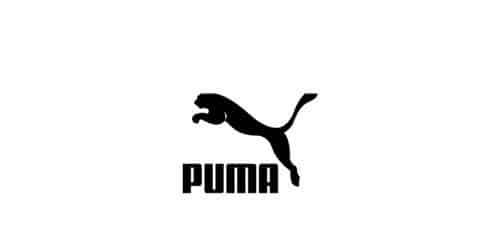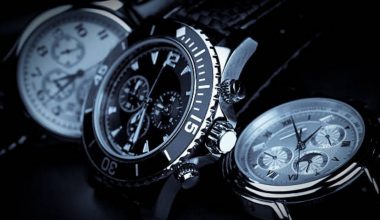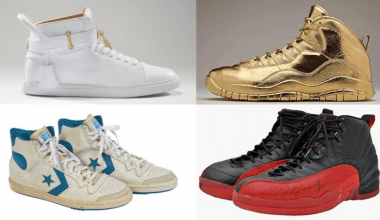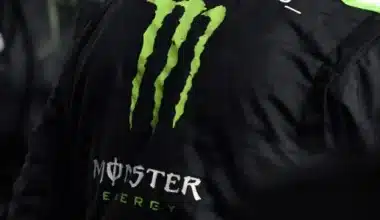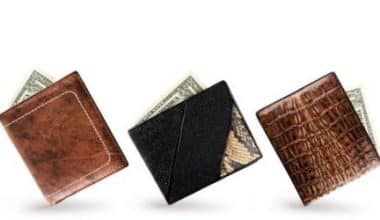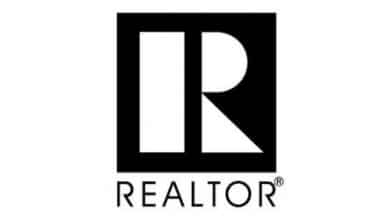Puma is one of the leading makers of sporting products, and one of its main competitors is Adidas. In 1948, when Rudolf Dassler established his shoe factory. Not only did he become well-known for developing groundbreaking items, but also for designing an iconic emblem that featured the likeness of a puma. Read the information below to learn more about the Puma logo, its meaning, history, and clothing items like women’s shoes.
Puma Logo Meaning
Puma, the world’s number two company, is a sportswear, footwear, and accessories manufacturer. In 1948, businessman Rudolf Dassler established the company from the remnants of the Gebrüder Dassler Schuhfabrik, which had been split in two following a dispute between its founders. Puma and Adidas are the two brands. Puma has used ‘my puma font,’ while Adidas has used Avant grade font in their logo. Herzogenaurach is home to the company’s headquarters (Bavaria).
The firm went by a few different labels. After RUDA, the initials of the creator’s first and last name come PUMA AG Rudolf Dassler Sport. The corporation is now known simply as Puma, after its now-iconic mascot.
Puma Logo 1948 – 1951
The logo’s introduction features a hungry cat leaping over the letter “D.” The name Dassler is also referred to here.
Puma Logo 1951 – 1958
In 1951, architects and designers encased the sketch in a hexagon. The original design included a single black geometric shape. In 1957, it was updated with a double black and white contour, and the word “Puma” was also placed beneath a picture of a ferocious cat. Whiteness was used as the backdrop in 1958. The words “Rudolf Dassler Schuhfabrik” were painted over a broad frame.
Puma Logo 1958 – 1968
The company abandoned the traditional design in 1958. For the next decade, he used a football boot with the words “Puma form-strip” as his logo. The first word is in a thick, sans-serif font, while the second is in classy italics. Therefore, the organization took note of the development of a lateral support element (Formstrip) in the shape of three stripes on sports shoes.
Puma Logo 1968 – 1970
Rudolf Dassler believed the footwear did not adequately represent the brand of Puma. Considering that a predatory cat epitomizes agility, strength, speed, and durability, it is only fitting to name this cat after these qualities. His son Gerd Dassler had trained under cartoonist Lutz Backes. Therefore, he asked Backes to redesign the company emblem. Initially depicting a black panther, the artist modified the drawing by adding the legs and head of a cougar so that the final product would better suit the client’s needs. The factory owner proposed a commission rate of 1 cent per Puma-branded item sold. However, Lutz said no and demanded a lump sum payment of 600 marks. He also received a sports bag and shoes in addition to the cash.
Puma Logo 1970 – 1974
The cougar’s profile evolved slightly in the year 1970. White with a black border, now. The animal’s depiction in mid-leap adds motion and energy to the figure.
Puma Logo 1974 – 1976
In 1974, the word “Puma” was again emblazoned across the symbol. It’s a bold, quadrilateral font with rounded corners, just like the 1958 version. The blackened, predatory cat has been moved to the right side of the picture. Variations of this trademark appeared both with and without a rectangular border.
Puma Logo 1976 – 1978
Research into visual effects carried on in 1976. The developers removed the cougar logo entirely. Plus, the typeface was altered; the letters are now slanted, and the letter “p” (despite its seemingly uppercase appearance) appears to have a lengthy vertical stroke. See the Formstrip down below.
Puma Logo 1978 – 1980
A failed brand makeover prompted the corporation to revert to its original logo design two years later. The cougar now appears to be trying to leap over the inscription.
Puma Logo 1980 – 1988
Formstrip was given the third iteration in 1980 as a translucent addition.
Puma Logo 1988 – Present
The designers brought back the 1978 logo; however, there is no curved strip this time. Black and white make up the majority of the color scheme. The thing is, there’s another one that’s a striking red color.
The Symbol’s Typeface and Hue
#1. Puma Emblem
It makes perfect sense for the Puma logo to depict the cat’s profile. The animal is depicted in mid-leap, highlighting the brand’s primary objective to encourage physical activity through its clothing and footwear. Because the cougar is so swift, it may reach record speeds when running—the trademark applied to tags and products correctly matches this idea. Artists cared to accurately depict the animal’s features down to the last ear, tail, paw, and smooth body shape.
#2. The Puma Symbol
In 1974, Puma introduced their current typeface, which is featured on its logo. The designers custom-made it for the business, taking cues from a rigid, bold grotesque. Samuel Park borrowed elements from this style to create his free sans-serif My Puma family of typefaces. The design is limited to a single color to emphasize the logo’s understated simplicity. Black and white are the default colors, but there are variants with vibrant red that pops.
What Does the Puma Logo Represent?
The Puma, sometimes known as a cougar, is a panther that is active at all hours of the day and night and can jump as far as 20 feet in the air, and its picture appears in the logo for the sportswear company Puma. Puma also used this icon to condense the product’s key features for the consumer.
What is The Original Logo of Puma?
The original PUMA logo depicted a puma cat soaring through a capital “D,” representing Rudolf Dassler, the company’s namesake and creator. In 1957, the word “PUMA” was added to the bottom of the image to modernize the pattern. Rudolf, Dassler, and “Schuhfabrik” (shoe factory) were added to the design a year later.
After being simplified in 1968 to only a jumping puma without any borders or text, the logo was tweaked again in 1970, this time by cartoonist Lutz Backes. In the middle of the 1970s, after experimenting with two alternative fonts, PUMA landed on the uppercase script that exists to this day, to which was later added the silhouette of a puma leaping over the upper-right corner of the text. This layout from 1979 hasn’t changed much since then.
Why Is it Called a PUMA?
This feline has more common names than any other animal, including mountain lion, puma, cougar, and panther. This cat goes by many names, but it is always Puma concolor. It is the largest of the “little cats.” How then did it acquire so many titles? Mostly because it covers such a broad spectrum, and because different cultures have given it several names over the years.
The term “mountain lion” originates from the Spanish words for “lion” and “cat of the mountain,” respectively. This cat was known to the Incas as “Puma” in their language. It appears that the word “cougar” was abbreviated from the South American Indian word “cuguacuarana” to its present-day form. Because “panther” refers to any cat with a solid color coat, it was applied to black pumas, jaguars, and leopards. There is no one accurate name for this animal, however, most people in Southern California refer to them as mountain lions.
Which Country Owns PUMA?
The Puma brand is owned by Puma SE, a German multinational firm located in Herzogenaurach, Bavaria, Germany that creates and manufactures sports and casual footwear, clothes, and accessories. Among the world’s leading manufacturers of sportswear, Puma ranks third. Rudolf Dassler also started the business in 1948. Rudolf and his brother Adolf “Adi” Dassler founded the company Gebrüder Dassler Schuhfabrik in 1924. (Dassler Brothers Shoe Factory). In 1948, the brothers resolved to split their business in two and establish Adidas and Puma as independent companies due to their deteriorating friendship.
After the two companies were separated, Rudolf registered the new business under the name Ruda (a play on Rudolf Dassler, just like Adidas was based on Adi Dassler), but he eventually changed it to Puma. The square and the beast jumping through a D were registered as the company’s first logo in 1948, the same year the name Puma was formally adopted. The Puma emblem and the now-iconic “Formstrip,” were thus first used in 1958. This can be seen in a wide variety of footwear and apparel.
What is The Tagline of Puma?
PUMA’s motto is “Forever Faster,” and it really means it.
Is Puma Brand A Cat?
Here, though, our attention is on the logo’s historical beginnings. As a tribute to company founder Rudolf Dassler, the original PUMA logo showed a puma cat leaping through the capital “D,” which stood for Dassler. In 1957, the word “PUMA” was inserted beneath the cat to modernize the pattern.
Why is Puma So Special?
For more than 70 years, PUMA has been known for producing quick product designs for the world’s fastest athletes. With performance and sport-inspired lifestyle items, we improve sports like football, running and training, golf, basketball, and racing.
Did Puma Change Their Logo?
The Puma’s famous leap through the letter “D” was still visible, but it was now surrounded by a hexagonal frame and had the word “Puma” written beneath it. The complete name of the company’s founder was also added to the original logo during this revision.
Is Puma a Japanese Brand?
The famous Japanese designer denim label Evisu will soon be introduced in India by the sports lifestyle company Puma. According to Rajiv Mehta, executive director of Puma Sports, “the Evisu denim range will feature jeans and skirts, with prices ranging from Rs 7,000 to Rs 13,000. The Opposition Board of Japan recently determined that the well-known PUMA emblem, for sportswear was not confusingly similar to the “KUMA” mark with a bear motif for goods in class 25.
The Board found no likelihood of confusion and cited the fame of the Opponent’s mark and the similarities of the trademarks as “key considerations” in reaching its conclusion. As for the former, the Board recognized the PUMA logo’s extraordinary fame and renown among the target audience in Japan. The Board disagreed, however, and based its decision on the notion that “KUMA” implies bears (wild animals) in Japanese and hence the first letter difference would create a distinct impression in consumers’ minds.
Which Brand is Better Puma or Nike?
Nike is the superior innovative manufacturer because of their consistent performance over the years. Whichever company has been able to harness technology and adapt to the times to develop luxury and novel sportswear that is both functional and sports-ready.
Nike became an eco-friendly company in 2010 when it began recycling sneakers and using plastic to help minimize pollution. Puma, on the other hand, is a company that focuses more on the needs of regular people. It’s like a slower, more chill version of today’s technological trends, but with more room to stretch out and be fashionable.
Does Virat Kohli Own Puma?
The PUMA One8 Basket is Kohli’s debut footwear line. Some media outlets have reported that the retail price of the freshly released sneakers is Rs. 5,599. They will be sold at all PUMA retail locations. Many people look up to Kohli, who is widely acknowledged as one of the best batsmen in history.
His new partnership with the international shoe company is sure to strengthen his ties to his devoted following. Last year, Virat Kohli signed an endorsement agreement with PUMA for an estimated Rs 110 crore over the course of eight years. By agreeing to the contract, he made history as the first Indian athlete to accept a Rs 100 crore endorsement agreement with a sportswear company. Because of the agreement, he became a global ambassador for the company, joining the ranks of other sporting greats such as Usain Bolt, Thierry Henry, and Asafa Powell.
Puma Shoes
Puma is a storied German multinational manufacturer of athletic gear and footwear. As the world’s third-largest sportswear manufacturer, the firm provides a wide selection of shoes designed for sports, performance, and leisure. Puma offers products of the same or higher quality as its competitors Nike and Adidas for far lower prices. Puma likely has a pair that works for you, whether you need them for marathon training, casual pickup soccer or basketball, or to complement your attire.
Tips for Buying Puma Shoes
#1. Material
There are several distinct material configurations available in Puma footwear. Soles are typically crafted from natural or vulcanized rubber, plastic foam, or other comparable synthetics that can decompose over time. Uppers of Puma shoes are typically made of leather, canvas, synthetics, or suede, all of which are recognized as the brand’s signature materials. While the majority of Puma’s shoes include traditional laces, the brand also offers slip-on styles, Velcro fastenings, and even a self-lacing system called Fit Intelligence.
#2. Sizing
The sizing options for different Puma shoes are not consistent in terms of precision or wearability. The Roma and Super Liga OG from the ’80s, for example, are narrower than modern shoe sizes, while other brands may run approximately a half size small. It’s best to try on a few different pairs before settling on a final pair.
#3. Usage
Puma creates footwear for a wide range of uses, including athletics, training, and leisure use. To those who spend most of their time on the golf course, soccer field, or hardwood court, Puma has designed a pair of shoes that will help you perform at your peak. On the other hand, a pair of wildcats is your best bet for certified street heat or posh-casual.
Puma’s Featured Shoe Designs
#1. Athletic
Since its inception in 1948, Puma has been a leading manufacturer of soccer footwear. In 2018, the company shifted its attention back to the basketball shoe market, launching new iterations of the original Clyde All-Pro and a new collaboration with artist and part-time pro-baller J. Cole. Puma is a major Formula 1 sponsor, and the brand’s popular driving shoes and team-branded sneakers are big hits with fans and racers alike.
#2. Exercise and Running
Puma also caters to men and women with its line of running, training, and gym footwear. With the exception of soccer, Puma’s most recognizable sport is running, as seen by the company’s widespread presence at major international competitions dating back to the 1952 Olympics and continuing to the present day. As a bonus, their reasonable pricing makes them suitable for both casual and serious runners. Puma also offers options for people who want to train at a gym.
#3. Lifestyle
The Suede Classics and Romas, two staples of the Puma lifestyle line, are the brand’s most recognizable shoes. The Speedcat, RS-Series, and Future Rider are just a few examples of the company’s current emphasis on a more contemporary lifestyle shoe. Finding a pair of matching Puma is easy thanks to the wide variety of colors and patterns available; the only difficulty is that there are too many desirable choices.
How Much you Can Expect to Spend on Puma Shoes
Classic and lifestyle sneakers by Puma cost between $50 and $80, while high-end athletic and performance footwear by the brand costs between $90 and $160.
A Typical Puma Shoe Should last How Long?
A well-maintained pair of Pumas can last for years, but high-performance styles like those made for basketball or soccer will show their age much more quickly. Some Puma running shoes, surprisingly, can handle a lot of miles and races without losing their effectiveness.
How Do I Take Care of Puma Shoes?
There are a variety of materials that can be utilized for the upper and the sole of your Pumas, each with different requirements for care and upkeep. Leather, synthetic, canvas, and nylon are all easily cleaned with moderate soap and water, whereas suede must be kept dry while being cleaned with a specific brush. Remove fingerprints and other marks using a damp cloth as soon as they appear on other surfaces. Never put your Puma shoes in the washing machine or dryer, and keep them far away from heat sources like radiators, ducts, and vents.
next to read is the women’s Puma shoes
Women’s Puma Shoes
Women’s PUMA shoes combine performance and style. Find women’s high-performance shoes for the dedicated athlete, as well as stylish, athletic, and bright PUMA kicks to wear when you’re not on the court, field, track, or doing whatever active pursuit brings you the most joy. Below is the list of women’s Puma shoes to go for:
#1. Bella Women’s Sneakers Puma Shoes
Bella has returned, and she’s better than ever. Inspired by timeless PUMA styles from the past, this season sees the return of the low-top. These women’s Puma low-key sneaker shoes are destined to become a classic thanks to their slick synthetic leather top and classic branding elements.
#2. Vikky V3 Women’s Sneakers Puma Shoes
The Vikky is characterized by its streamlined silhouette and modest, yet impeccable style. We gave this classic a facelift by updating the cupsole with contemporary tooling while keeping the same clean lines and time-honored logo as in the original. Featuring an incomparable level of comfort thanks to our SoftFoam+ sock liner, this sneaker is the ultimate go-to for any casual occasion.
#3. PUMA Smash v2 Sneakers Women’s Shoes
The newest version of the PUMA Smash is called the v2. These tennis-inspired sneakers include a suede upper and a traditional rubber sole. Completely timeless in nature. Fashioned after the cut of tennis uniforms, Genuine suede upper, Lace-up front, Rubberized heel and toe for traction, PUMA Metallic PUMA No.2 logo on the outer side, formstrip overlay on the upper, and a woven PUMA No.1 logo on the tongue.
#4. Skye Women’s Sneakers Puma Shoes
Wear the all-new PUMA Skye and keep your thoughts up in the sky. These sneakers update the ’80s look with a sleek leather upper, a higher-than-ever platform, and bold branding at the sole. If you’re ready to go beyond, it’s got you covered. Also, the upper is made of high-quality leather and features a perforated design at the vamp.
Completely lace-up, Padded insole for all-day comfort, Style of Rubber Platform in the Middle
The rubber sole features a large PUMA logo, and the sides are adorned with a PUMA Formstrip overlay.
#5. Women’s Running Puma Shoes with Soft-Ride Finesse Sport Cushioning
The Softride Finesse is a great choice for runners who don’t want to sacrifice durability for the sake of their sneaker’s aesthetic. These stylish kicks will get you through the day and beyond thanks to their airy top, varied textures, intense cushioning, zoned rubber outsole for traction, prominent PUMA branding, and athletic style.
6. #Women’s Slides by Cool Cat Puma Shoes
For those who won’t sacrifice comfort for style, there is the Cool Cat Echo Wns, a slide with a sturdy strap and plush padding. moreover, it has a lightweight molded EVA outsole, a cushioned molded footbed, and a sturdy synthetic leather top.
Is PUMA owned by Adidas?
A lot more history is behind Adidas and Puma’s rivalry than meets the eye. Both businesses target similar customers and were started by brothers named Rudolf and Adolf Dassler. Also known as the Dassler brothers, or the brothers behind both Puma and Adidas. The relationship between the two brothers is well-known to have deteriorated over time. The Dassler brothers’ rivalry is the most famous example of sibling rivalry in business, and their impact on the athletic gear industry was profound. Puma and Adidas are two of the most well-known and successful sportswear companies, yet their histories are rooted in bitter competition.
What Animal is on PUMA Logo?
The Puma, sometimes known as a cougar, is a panther that is active at all hours of the day and night and can jump as far as 20 feet in the air. Its picture appears in the logo for the sportswear company Puma. Puma used this icon to condense the product’s key features for the consumer.
Who is Nike Owned By?
Nike, Inc. (NYSE:NKE) is a multinational corporation specializing in the creation, distribution, and retail sale of athletic footwear, sneakers, apparel, equipment, services, and accessories. The vast majority of Nike’s goods are made by third-party vendors. In addition to its own stores and online marketplace, the company also offers its wares through third-party distributors and retailers. Phil Knight, Mark Parker, Andrew Campion, Swoosh LLC, Vanguard Group Inc., and BlackRock Inc. are Nike’s main shareholders (BLK).
Nike’s 12-month trailing sales is $37.4 billion, while its net income is $2.5 billion. The total value of the company’s stock on the stock market is $151.5 billion. Data is current as of July 15th. Over ninety-seven percent of Nike’s outstanding Class A shares are owned by Phil Knight, the company’s co-founder, and his son, Travis Knight, along with the holding corporations and trusts they control. Although Nike is a publicly traded company, the Knight family is still able to exert significant control over the company.
#1. Phillip Knight
As of April 2, 2020, Nike stockholder and billionaire Philip Knight directly owned 29,154,487 shares of Class A stock and 11,385,687 shares of Class B stock, for a combined 9.3% of Class A shares and 0.9% of Class B shares outstanding. Knight owned 2.6% of all outstanding shares. In 1964, Knight and Bill Bowerman, his former track coach, launched Blue Ribbon Sports, eventually becoming Nike. Throughout the next six decades, Nike would grow to become a global icon in the realm of athletic wear, cementing Phil Knight’s position as a billionaire. Except for a brief period in the early 1990s, Knight served as president of the corporation from 1968 to 1990, and then again from 2000 until 2004. Knight joined the board in the 1960s and served until June 2016, when he stepped down as chair.
#2. Mark Parker
About 0.09 percent of Nike’s total shares are in Mark Parker’s possession, or 1,450,813 shares. Mark Parker is the company’s Executive Chair after serving as President, CEO, and chair for a combined total of 14 years. Parker resigned as CEO in 2019. Parker has worked at Nike since 1979, first as a footwear designer, and later as an executive leader in the areas of Consumer Product Marketing, Global Footwear, and the Nike Brand.
#3. Andrew Campion
With his 233,156 Nike shares, Andrew Campion owns around 0.01% of the company. Since April 1, 2020, Campion has served as Nike’s Chief Operating Officer. He has been the company’s leader throughout a crucial time of digital transition and worldwide technological advancement. Having started at Nike in 2007, Campion served as CFO and Executive VP from 2015 until 2020.
About 64.5% of Nike’s total shares outstanding are held by institutional investors.
#1. Swoosh, LLC
According to its 13D filing for the 30th of June 2016, Swoosh, LLC owned 257,000,000 shares of Nike stock, or 16.5% of the company’s outstanding shares. Phil Knight established Swoosh as a limited liability company to handle the majority of Knight’s Nike stock. When he retired as head of the board in 2016, Knight moved his voting interests in Swoosh to a trust held by his son, Travis Knight, who is now a director at Nike.
#2. Vanguard Group, Inc.
According to Nike’s 13F filing for the quarter ending March 31, 2020, Vanguard Group has 109.2 million shares, or 7.0% of total shares outstanding. With $6.2 trillion in total assets under management, the company’s primary business is managing mutual funds and ETFs (AUM). With $43.0 billion in assets under management (AUM), the Vanguard Dividend Appreciation ETF (VIG) tracks an index of U.S. corporations with continuously increasing dividends for 10 or more consecutive years. Approximately 1.6% of the fund is invested in Nike stock.
#3. BlackRock, Inc.
According to Nike’s 13F filing as of March 31, 2020, BlackRock owned 91.0 million shares or 5.9% of the company’s total shares outstanding. Approximately $6.5 trillion is under the firm’s management through its mutual funds and ETFs. When it comes to assets under management (AUM), the iShares Core S&P 500 ETF (IVV) is among BlackRock’s largest ETFs with over $197.7 billion in assets under management. Only 0.5% of IVV’s portfolio is invested in Nike.
Where is Puma Sold the Most?
Puma exports have historically done the best in the Americas. In terms of net sales, it area accounted for 38.7 percent of the global total that year. Next came Europe, the Middle East, and Africa (EMEA) with just over 2.5 billion euros in net sales, followed by Asia-Pacific (APAC) with 1.6 billion euros in net sales. That same year also marked the first time that Puma’s EMEA net sales topped 2.5 billion euros.
Does Louis Vuitton Have a Slogan?
Depending on the value different consumers have on LV as a luxury brand, “L.V the Truth” is an abstract slogan that is yet straightforward and simple to interpret in a variety of ways.
What is The Slogan For Prada?
Despite not always having a tagline, Prada does have an unofficial credo. “Be heard, be seen.” Miuccia Prada, the company’s current founder, aspires to use high fashion to help individuals create their voice and personality, stand out from the throng, and assert a claim on the world.
Related Article
- Best Pet Affiliate Programs In 2023: Top 10 Picks
- ADIDAS AFFILIATE PROGRAM: 2023 Review, Commission & Detailed Guide
- BEST GOLF BRANDS IN THE WORLD: (Best-rated prices)
- NIKE LOGO: The Story Behind Great Branding!!!
